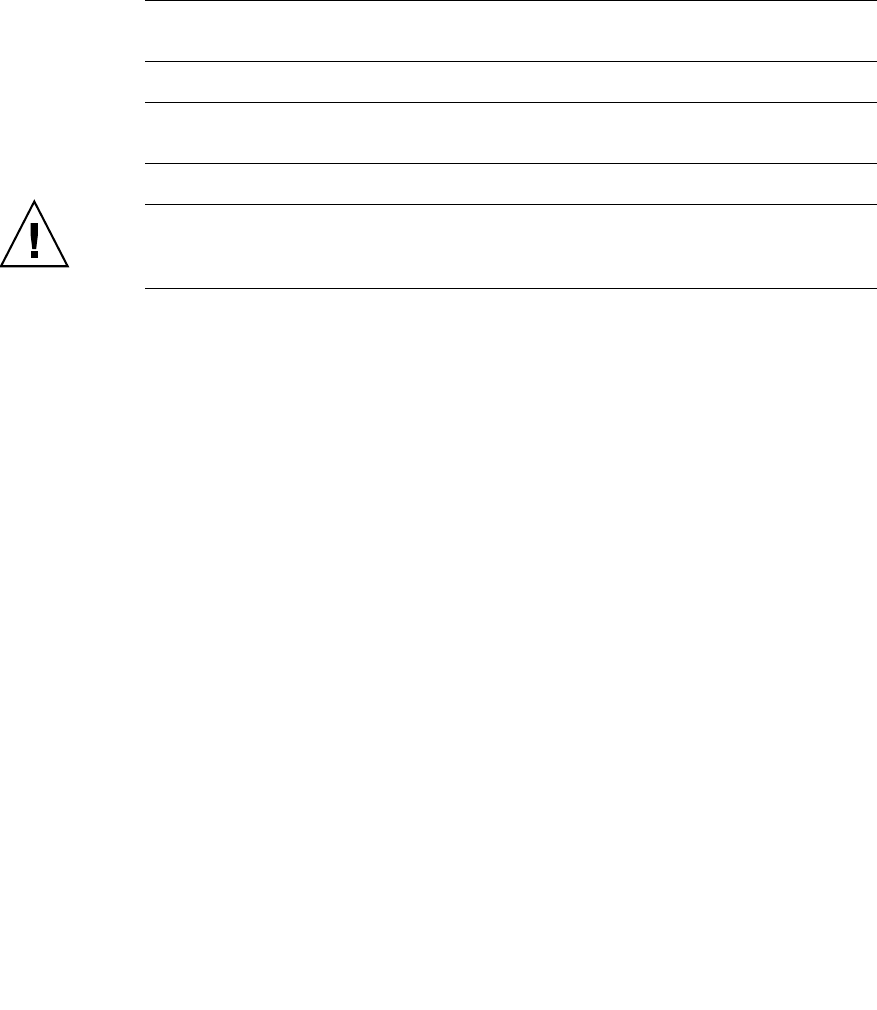
Chapter 7 I/O Unit (IOU) Replacement 7-17
12. Mount the replacement IOU by following the removal instructions in Step 7 in
reverse order. Align the IOU with the slot guides, insert it carefully, and secure it
firmly.
Push the eject/lock levers as far as they will go, and then push the knob screws on the
upper and lower eject/lock levers to lock them in position. When the knob screws remain
in position, the IOU is securely mounted.
Note – Mount the dummy (filler) unit in the same manner as IOU. Since the same levers are
used on the dummy (filler) unit, please operate the eject/lock levers in the same manner.
Note – In hot addition of an IOU, mount the CMU and IOU in the proper location.
Otherwise, the added IOU may not operate.
Caution – Do not forcibly push the IOU when inserting it, even if it is not moving
smoothly. You may fail to insert the IOU due to the presence of any obstruction in a slot or
any problem with a connector pin; and if you forcibly insert it, serious damage may result.
13. Go back to the terminal that is connected to XSCF, and perform the input operation
according to the instructions of the maintenance menu that is displayed after the
replacement.
a. Because the displayed messages are different between active replacement and hot
replacement, perform the operation according to the instructions for each case.
When the display of the maintenance menu returns to the initial page, the
operation is completed.
b. Exit the maintenance menu.
14. Configure the IOU into the system.
Active replacement:
Configure dynamically the IOU into a domain by using the addboard command. Do this
operation for all the domains that have been recognized in Step 2 as including the target
CMU.
For details, see Section 4.2.2, “Disconnecting and Replacing a FRU” on page 4-6, and the
SPARC Enterprise M4000/M5000/M8000/M9000 Servers Dynamic Reconfiguration (DR)
User’s Guide.
Hot replacement:
From the console that is connected to XSCF, execute the poweron -d command of
XSCF to turn on power to the domain.
When the power to the domain is turned on, the power-on self test (POST) is performed.
When ok prompt displayed on the console of relevant domain, POST is completed.


















